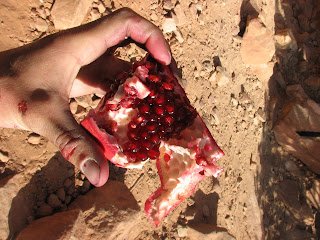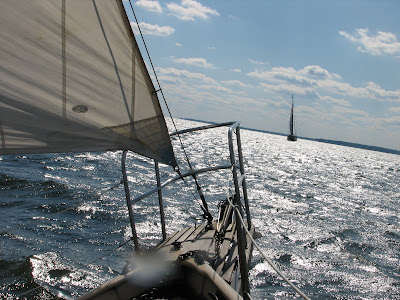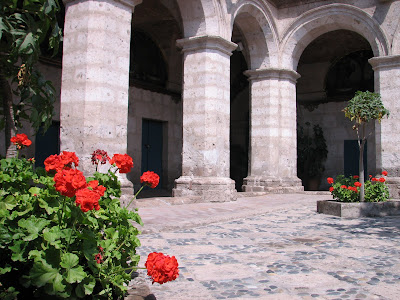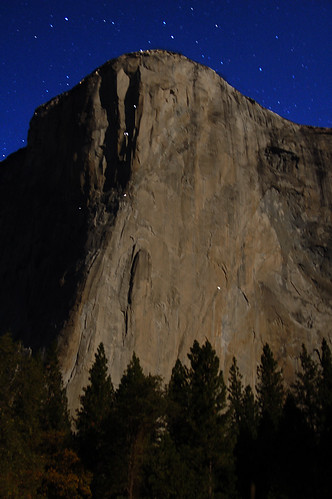
Five days in the Cañon del Colca and we are both feeling a bit weary. After conquering El Misti and Chachani, I think we felt a bit invincible, but trekking amidst cacti, cliff sides, and swinging rope bridges, we have both been humbled. The five days took us from a low point of around 2000 meters to a high of 5100, with many dips, rises, and dives between. It took a full day to descend into the second deepest canyon in the world. Just like the Grand which we know in the states, the Colca is also hot, and arid. To our surprise and horror, it also harbors desert creatures. Day two, around 7 am Kevin let out a high pitched squeal amidst a spew of cursing. There was a scorpion in our tent, wriggling between the sleeping pads all night with us. The previous evening in camp we heard voices approaching. One word which stuck out was ¨gringos.¨ Kevin hollered back, ¨si, gringos!¨The two fellows, hiking in the moonlight, gave us a few apples, and we gave them a drink of rum.
The apples were appreciated due to our tight supply of food. We debated using an ATM before we took off. Chosing not to, we started the trek with about 80 soles (around $25), figuring around 40 soles for a bus ride back, and a bit for a burro to haul our packs over the high point of Paso Cerrani. In the end, los burros y arrieros (guides) seemed too busy with an alfalfa harvest to help, so we saved a few soles and hiked the pass with our packs in two days rather than one. After hiking the 5100 m pass (approx. 17,500 ft), we learned the villagers probably didn´t want to help us because the pass is brutally steep. Although we saved soles without the burro, we spent them later on buses and taxis leaving us with literally one sole on our return to Arequipa.
Fortunately we carried plenty of dried food for the trip, and Maggie got to eat mashed potatoes for her birthday (mixed down with oriental soup for flavor).
Day 3 of the 5 day trek, we awoke in the town of Miña (where we failed to hire a burro). It is set at the top of a steep river gorge and was misty and cold. As we wandered the mud hut alleys looking for someone named Alejandro Nina´s hijo we ran into a couple of jolly characters. Jolly as in drunk, at about 7 am. They were father and son and we had to turn our heads not to get sick from their pungent breath. Everyone in the town was busy with harvest, except for these two, and they surely weren´t going to get us up the pass. After detaching ourselves from their conversation of slurred spanish (try understanding that!), we started our day late. This is the point in the trek we both started feeling a bit queezy, be it fatigue or failing to boil our water long enough. The priorities of the next few days were conserving our dwindling supply of tp and trying not to think of the real food. Our conversations turned to pizza, syrup soaked pancakes, and even a comparison of the Big Mac to a Whopper.
Arriving in Chachas on day 5 (one day later than planned) we were greeted by very generous welcomers who would have put us up and fed us dinner due to our limited supply of funds. We met the town Father who immediately asked if we were Catolicos. Kevin told him he was Presbytarian, good answer. Next question of course was if we were married, ha ha. From Chacas there as a bus leaving for Andagua, our final destination. Due to our weary and somewhat sick condition, we chose to take it. It was a winding drive through the lava flows of the Valle de los Volcanes. It was one of two hair-raising bus rides that day, the other being the ten hour ride back to Arequipa through mountain passes on rocky, steep roads. Our mothers do not want to hear about it. We are recuperating in Arequipa, somewhat of a home base now, for the next couple days. Then it is off to more night buses back North toward Huaraz and the Cordillera Blanca.



















































